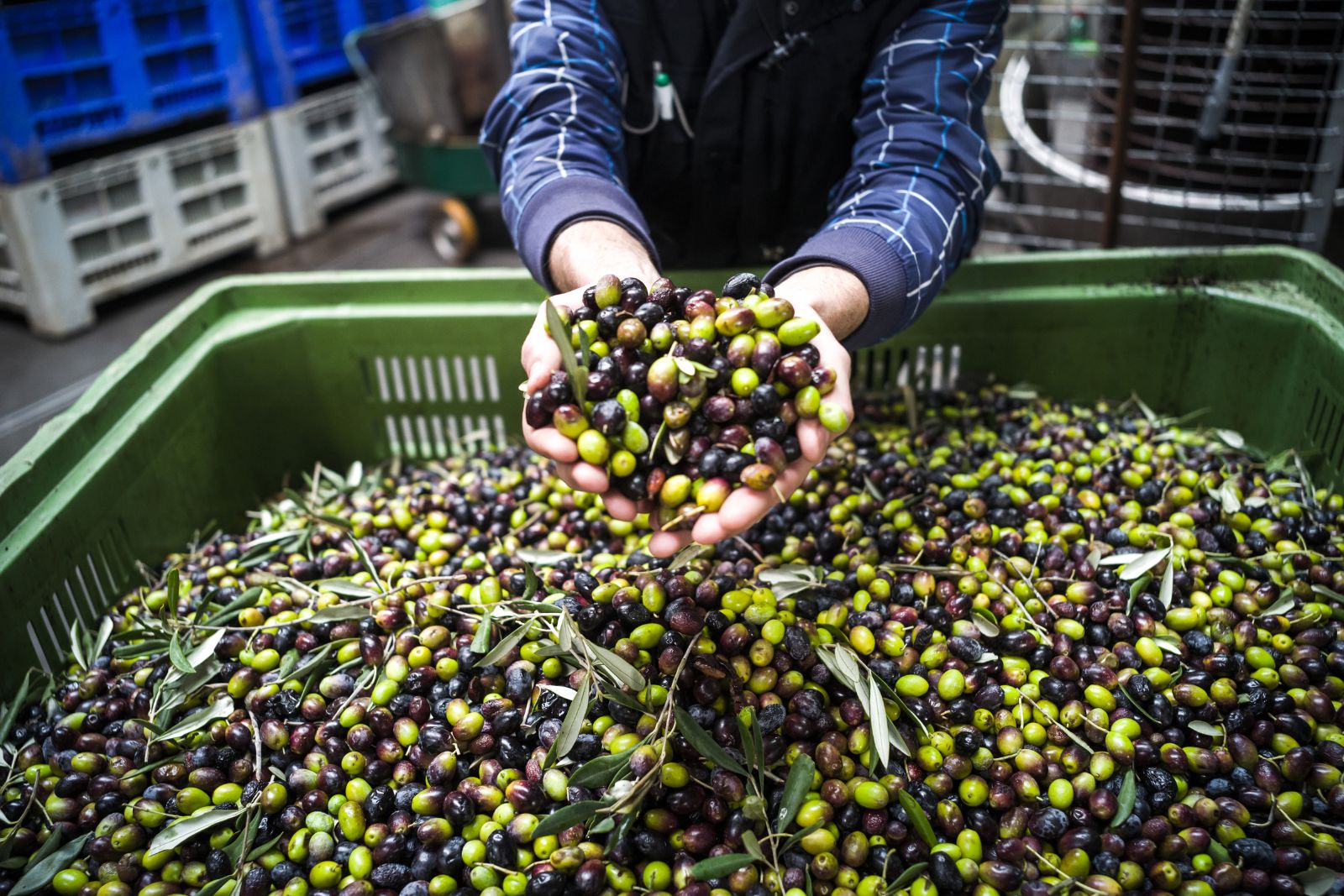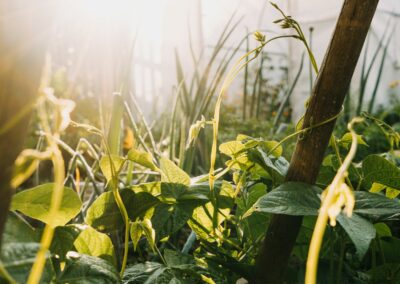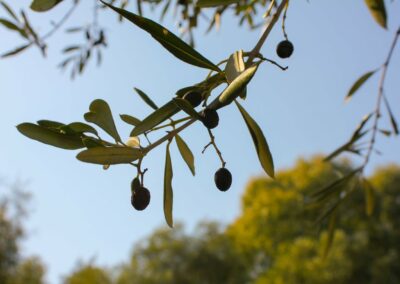Olive oil is a natural oil extracted from the fruit of the olive tree (Olea europaea).
It’s a great source of antioxidants, vitamins E and K, and oleic acid which is said to reduce the risk of various inflammatory diseases (more in this Healthline article, which also has an interesting comparison of different types of cooking oils).
But not all olive oils are equal: there are vast differences in quality, and marketing does not always allow us to make well-informed choices at the shop or supermarket.
How is olive oil produced?
The process of harvesting and pressing olive oil has existed for thousands of years. Nowadays, there are different methods of extraction, and each has a big effect on the flavor and the quality of the end product.
Here in rural Spain, several (most?) smaller presses still use the ancient mechanical process using stone to grind the olives, and matts to slowly press the paste. The results from this process are fabulous, but the process requires intensive labor (imagine cleaning the stone and those matts again and again!) – for a relatively low yield.
- The olives get crushed into a paste
- A press extracts the liquids from that paste
- A third process separates the vegetable water from the oil.
Most olive presses in the country (and elsewhere in the world) have converted to a more modern process using a centrifuge instead of a press though.
- The olives are crushed by a hammer mill
- The resulting paste goes into a “malaxer” where it is warmed and mixed until the oil separates
- The paste is then pumped into a centrifuge that separates the solives from the liquids
- And a final centrifugal process separates the vegetable water and the oil
This machinery makes the process much faster, without the olive oil necessarily losing its taste and nutrients; however, the amount of heat used in the process does influence the quality of the oil (more below under “cold pressed”).
In 2023, we chose to divide our olives for processing about 50/50 between a traditional press and a more modern (but still small-scale) centrifuge process, so we could compare both directly. Although we mostly split this because of the low availability at our local press! The full story is coming up soon, we’re currently waiting on the oil to settle…
You can read our personal stories with pictures of olive harvest and pressing in some of the older blog posts: about our 2014 harvest, 2016, and 2017.
Extra Virgin Olive Oil
Virgin olive oils do not undergo any treatment other than washing, decantation, centrifugation and filtration.
The difference between “ordinary virgin olive oil”, “virgin olive oil”, “extra virgin olive oil”, and “ultra premium extra virgin olive oil” is measured in the level of acidity – but the actual difference lies in the freshness of the olives, the production process, the amount of food additives (none!), packaging, the level of heavy metals, pesticide, and solvents, etc.
Extra Virgin Olive Oil (also abbreviated to EVOO) is considered the highest quality olive oil – even though some experts have doubts about the level of oversight and testing applied to mass-produced EVOO.
Find more about the different types of virgin olive oil in this article!
Warm vs Cold Pressed
In very ancient days, olives were pressed cold – in most olive-oil-producing regions, olive harvest happens in late fall and early winter. So cold means as cold as it gets in those regions.
Soon though, producers learned that the yield got higher as you slightly heat the olive paste for pressing: you get more oil for a given amount of olives. However, heating the paste can affect the flavor and the nutrients in the oil.
Because of this, a “cold press” label is almost as relevant as an “extra virgin” label – when you buy a cold pressed olive oil, it implies that the temperature during the process did not exceed 27 degrees Celsius (80.6 degrees Fahrenheit). A “warm pressed” olive oil (= oil that wasn’t cold pressed) can still be “Extra Virgin”: you will mainly notice the difference in taste.
First Press vs Second Press
When olive oil is pressed using the traditional method (where olive paste is slowly pressed with a hydraulic press to produce oil), this oil was “first press” olive oil and also had the best quality product.
The remaining olive paste was then mixed with hot water and pressed again, in order to produce a second batch of olive oil; this oil did not have the same level of nutrients and flavors as the first batch though.
With the modern and more efficient machinery used to press olive oil, the yield from the first “press” (centrifugation) is much higher – and the remaining olive paste is not suitable to press more oil from.
Since modern presses are no longer able to do a second pressing, the word “first press” has somewhat lost its meaning. Locally, second press oil is most often used as grease oil (e.g. to grease machinery or treat wood).
Organic Olive Oil pros and cons
These days, many of us try to reduce the amount of harmful substances in our bodies. And many olive farmers love their chemicals!
A pest like the olive fruit fly can seriously damage the fruit and reduce the yield – and if not kept under control, it spreads fast and can affect your neighbours and before you know it, the whole region. Biological means of pest control with traps are often more time-consuming and less effective, which means pesticides are often the first choice for bigger commercial operations.
Similar for the use of herbicides: a lot of older olive farmers these days like a “clean” field – they believe that grass (or other growth) on the field will “steal” all the water from the olive trees. So instead, they will plough the field often and again, roll it so it becomes nice and flat, and this also makes it easier to vacuum up fallen olives after the harvest (these fallen olives will often be used to produce a lower quality olive oil, later in the season). Herbicides are an efficient way to prevent grass from growing in between ploughing sessions.
The last decades have proven that this system of spraying and ploughing is not sustainable – it leads to fast erosion and loss of nutrients in the soil, and it affects the availability of water for the olive trees negatively.
When the grass around olive trees is kept under control instead of taken away completely, the soil beneath it is healthier and has better water-retaining capacities (which benefits the roots of the olive trees just as much as it does the grass that keeps the soil from eroding). A higher biodiversity in the field also makes more room for the olive fruit fly’s natural predators like parasitic wasps.
While big-scale olive farming in our regions are not all convinced of this yet, smaller olive producers have seen great results by switching to a more natural and regenerative way of managing their farmland – as described in this article in the Guardian.
And this is where the question of “organic olive oil farming” comes in: while most small-scale olive farmers and home producers (like us) are 100% organic, the process of acquiring an organic label is too costly and time-consuming for it to be worth-while. We don’t have our own olive press, but depend on commercial installations in nearby villages. The majority of the olives that those presses process are ‘de facto’ organic (also grown and harvested by small-scale producers who don’t have the need for pesticides or herbicides), very few of the presses (if any) are certified organic.
Commercial operations are often in a different situation – if they own enough property, it may be worth the effort to get certified as organic – as the risk of losing that certification when a neighbour sprays their trees is much lower. They also either have their own press, or are affiliated with a nearby press.
In short: while the use of pesticides and herbicides probably won’t exceed EU norms if you buy olive oil in a shop or supermarketing, the absence of an organic label in commercially produced brands pretty much guarantees the use of chemicals.
Types of Olives = Types of Oil
There are many different types of olives, each of them coming with their own specific uses and characteristics.
“Raw” olives are absolutely horrendous – they are bitter and once you’ve tasted one, you’ll never try it again. How amazing that these inedible little fruits get so delicious when cured or pressed into olive oil!
Most olives go from white or green to black or purple – knowing when to harvest which variety is crucial for a high quality product.
While a full article comparing different types of olives is in the making, here’s a short overview to start with:
- Empeltre olives are mainly found in Bajo Aragon (that’s where we are) and the Balearic islands. The trees mature slowly and the blossoms are very frost-sensitive, but the taste of both cured olives and olive oil made from Empeltre olives is exquisite. Olive oil made from green Empeltres (before they turn black) is more spicy, and also more valuable because the olives are harder to harvest at that stage.
- Arbequina olives are very small, but produce a very high yield. They also get harvested earlier in the season, as they are harvested while still green. It has a mild flavour and is mostly used in cooking and baking.
- Picual olives produce a very high yield in oil (about 1/3), and they’re also very weather-resistant. No wonder this is a very popular variety amongst olive farmers.
- Alfafarenca olive trees originate from the East coast of Spain, and they’re slightly more bitter than the above two varieties.
- Blanceta olives start out white – and turn red-purple over time. The oil is usually pretty spicy and fruity.
- Cornicabra are probably the most whitespread olives used to make olive oil in Spain; the trees can be found all over the country.
- Genovesa, Changlot Real, and Royal are other olive varieties found across Spain – but I haven’t come across them in our region (that I know) yet.
Can or Should you Cook with Olive Oil?
In most countries outside the Mediterranean basin, olive oil is not used for cooking – partly because it’s not part of the culture, and it’s more expensive than butter or vegetable oils. And also because health experts taught us that olive oil can’t be heated or used for frying because of its low smoke point (the temperature at which the oil begins to smoke and harmful elements are released).
In reality, the smoke point of olive oil depends on its quality and freshness: the higher the quality, the higher its smoke point. A fresh and good quality olive oil has a smoke point of around 200 degrees Celsius (400 degrees Fahrenheit), while frying occurs between 160C and 190C (325F-375F). This makes quality olive oil more suitable for cooking and frying than some other vegetable oils.
All of that being said, the taste of quality olive oil is best appreciated in cold dishes and salads – or simply with a loaf of fresh and tasty bread.
In our rural area in Spain, everything gets cooked or fried in olive oil. And at many restaurants, the waiter will just as gladly tell you all about the provenance of the oil on your table, as about the wine or other food they serve.
Good to know:
- Don’t get caught up in the light-and-fat-free craze – “light” olive oil does not refer to fat and calories, but rather the flavor, taste and color of the oil. This oil has undergone a refining process that makes it cheaper to produce, but not better.
- The color of the oil usually has nothing to do with its quality – it usually depends on the variety of olives used, as well as their ripeness (see green vs black olives below).
How long does olive oil keep? How should you store it?
Store your olive oil in a dark bottle, in a cool and dark place.
While you can refrigerate or even freeze olive oil, it’s not necessarily good: the oil hardens at lower temperatures, and frequent thawing can reduce its shelf life.
If you find white clouds in your olive oil, it hasn’t gone bad and the clouds are not mould; in 99% of the cases, you’ve been keeping your oil in a cool or even cold place. Which is a great way to extend its shelf life! Placing it in a warmer (but still dark) environment when you want to consume the oil will see the whiteness disappear in 12-48 hours (depending on how cold it got!).
Darker clouds or bottom residue in olive oil are usually caused by olive particles that weren’t filtered from the oil during processing. The amount of residue might influence the shelf life of the oil. If you oil contains a lot of olive particles, consider transferring it into a different bottle and filtering out the dark bits (or leave them at the bottom of the first bottle, where they belong).
When stored properly, olive oil can have a shelf life of up to two years before it starts to lose its flavour. It usually has a “best before” date, after which you can keep consuming it at your own risk – however, don’t use oil that smells or tastes weird for eating.
Share your story below! Do you have a preference? Did this article help you understand what (not) to buy when it comes to olive oil? Any questions?










0 Comments